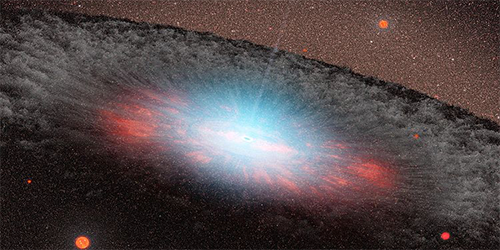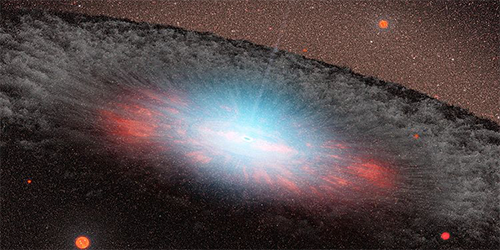Black Hole Tests of Fermionic Dark Matter
One of the principal strategies to indirectly detect dark matter is to search for the photons produced when it annihilates. Such searches look for gamma rays or x rays in regions of the sky where dark matter is known to be abundant. Researchers at the University of Illinois at Urbana–Champaign have proposed to look inside dark matter spikes induced by the gravitational pull of supermassive black holes. Such measurements could test so called p-wave dark matter models.
Most astrophysical dark matter searches rely on the assumption that the annihilation cross section does not depend on particle velocity. However, there are models in which dark matter annihilates via p-wave interactions—that is, the pair of annihilating particles has initial angular momentum one—leading to a cross section proportional to the velocity squared. This happens, for instance, in models where fermionic dark matter annihilates to pairs of spinless bosons. Since the dark matter temperature, and hence its velocity, is believed to be low, p-wave signatures were largely inaccessible by current searches.
However, near a supermassive black hole like the Milky Way's Sagittarius A*, dark matter is expected to cluster into a density spike. Within such a spike, the density and velocities of dark matter particles could be sufficient for thermal p-wave annihilation to produce a detectable gamma-ray signal. Using two prototypical p-wave models and gamma-ray data from NASA’s Fermi Large Area Telescope, the researchers found no evidence for p-wave dark matter and constrained its annihilation cross section for the first time. Their analysis suggests that a dedicated search for sharp gamma-ray lines near Sagittarius A* can improve these constraints.
This research is published in Physical Review Letters.
–Kevin Dusling





